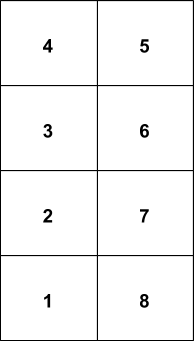Primary Schools Teacher Resources
1. EXAMINING EVIDENCE
What were games like in the past? Here are some examples of evidence that give you clues about play and games in the tenements:
Oral histories
- Oral histories are recordings of people talking about something they remember. In these recordings, children from the Hardwicke Street Community Centre in Dublin ask Peter Brannigan, who grew up in 14 Henrietta Street, about what play was like in the tenements when he was a child:
"What did you used to play?"
"What were the toys like?"
"What time did you come inside?"
- Oral histories can be videos as well. Here are some more people who grew up in Henrietta Street talking about their memories of childhood:
TENEMENT SONGS AND RHYMES
- Songs and rhymes were popular with children in the tenements. Here are some recordings of children today singing some songs from tenement times:
A Sailor went to Sea, Sea, Sea
Bluebells, Cockle Shells
1, 2, 3, My Mother caught a Flea
TOYS
- Many children in the tenements made their own toys. This skill often stayed with them for life. Here is a trolley made by a man called Leo, who grew up in a tenement on Wood Quay, on the south side of the River Liffey.

As a class, talk about these different pieces of evidence:
- What do they tell us about games, play, and growing up in tenement times?
- What are the similarities and differences between then and now?
- (For 5th-6th class) Which of these are primary and which are secondary sources? Why do you think that?
PLAYING PIGGY BEDS
Piggy Beds was a favourite street game for children in the tenements. Learn how to play it below.

You will need:
- An empty tin of shoe polish or empty drinks can
- Chalk
- A flat outdoor surface
1. DRAW THE BEDS
- Find an even surface outside, away from any traffic or dangers, and chalk out a grid that looks like this:
2. Make your piggy
- Take an empty tin of shoe polish, or a drinks can, fill it with gravel or sand, and stamp on the top of it to make it a disc.
3. Play
- Toss your piggy into square number one.
- Stand on one foot, and hop into the square.
- Kick your piggy with the foot you’re standing on into square number 2 - if it lands on the line, or goes outside the lines, you’re out.
- Hop into the next square. You’re only allowed one hop per square, and one kick per square
- Keep going round the grid, and see if you can get all the way round without putting your other foot down.
- Square number 4 and 7 are ‘rest beds’ - you can put your foot down here and have a rest
- Keep going all the way round and back to square number 1. Jump out and start again - throw the piggy into square number 2 and start again.
Task 3: My Museum
Build your own Museum of Games by collecting evidence from the past and present:
- Photos
- Objects
- Stories: talk to someone older than you. What did they play as a child? What games do they remember? Can they teach you any?
- Your own stories: What games do you play? Can you write, draw, or paint instructions to add to your museum?
 ShopBook Now
ShopBook Now